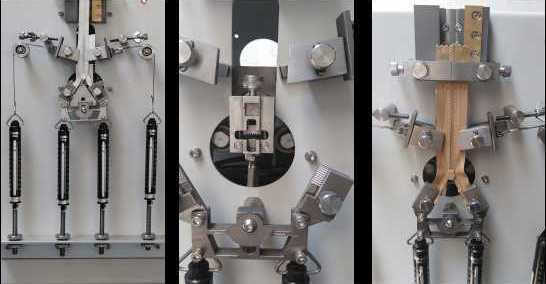How to deal with abnormal data in zipper test results?

Dealing with anomalous data in zipper test results is an important part of ensuring test accuracy and product quality. The following is a detailed 1000-word guide on how to deal with such anomalous data.
When conducting a zipper test, you may sometimes encounter anomalous data, i.e. data points that are significantly different or out of the expected range compared to other test results. These anomalous data may be caused by measurement errors, equipment malfunctions, sample problems, or other factors. To ensure the accuracy and reliability of test results, these anomalous data need to be handled appropriately.

1. Confirmation of anomalous data: First, it is necessary to confirm which data are considered anomalous. Abnormal values can be identified by comparing the actual observed values with the expected range. If a value deviates significantly from other values or is outside a pre-defined reasonable range, then it can be labeled as an outlier.
2. Check the measurement process: Check the measurement process for any potential problems. For example, verify that the test equipment is working properly, that the calibration is correct, and that the operator is performing the test according to the correct procedures. Eliminate sources of error in the measurement process that could lead to anomalous data.
3. Verify Sample Information: Verify sample information to determine if there are any special conditions that could affect test results. For example, check to see if a sample's manufacturing lot, material supplier, or other relevant factors differ from other normal data points. If the abnormal data is concentrated on samples from a particular lot or supplier, further investigation and action may be required.
4. Repeated testing: Repeated testing of anomalous data is an effective way to confirm its accuracy. Multiple independent tests can validate the results and rule out outliers due to chance errors. If the results of repeated tests still show abnormal data, then consider it as a real measurement result.
5. Data Analysis and Comparison: Compare and analyze the anomalous data with other relevant data to determine its cause and potential impact. This may involve statistical analysis, charting, or other visualization tools to help understand the relationship between the data. Based on the results of the analysis, the impact of the outliers on the overall test results can be assessed and a decision can be made as to whether further processing is required.
6. Recording and Reporting: Detailed records of all processing are kept and reports are generated for follow-up and reference. The report should include the anomalous data found, the method of processing, the results of the analysis and any corrective actions taken.
7. Corrective Action: Take appropriate corrective action based on the cause of the anomalous data. This may include repairing test equipment, replacing samples, adjusting test procedures, or retraining operators. Through corrective action, the occurrence of anomalous data can be reduced and the accuracy and reliability of test results can be improved.
8. Continuous improvement: Utilize anomalous data as an opportunity for continuous improvement. Analyze the root cause of abnormal data and take steps to prevent similar problems from recurring. This may involve updating test standards, improving supply chain management, optimizing processes, or strengthening quality control.
Dealing with anomalous data in zipper test results requires a combination of factors and an appropriate approach to handling it. By correctly identifying and handling anomalous data, you can improve the accuracy of your test results and maximize the assurance that your product quality meets standards and customer requirements.
2023-07-19 10:07

